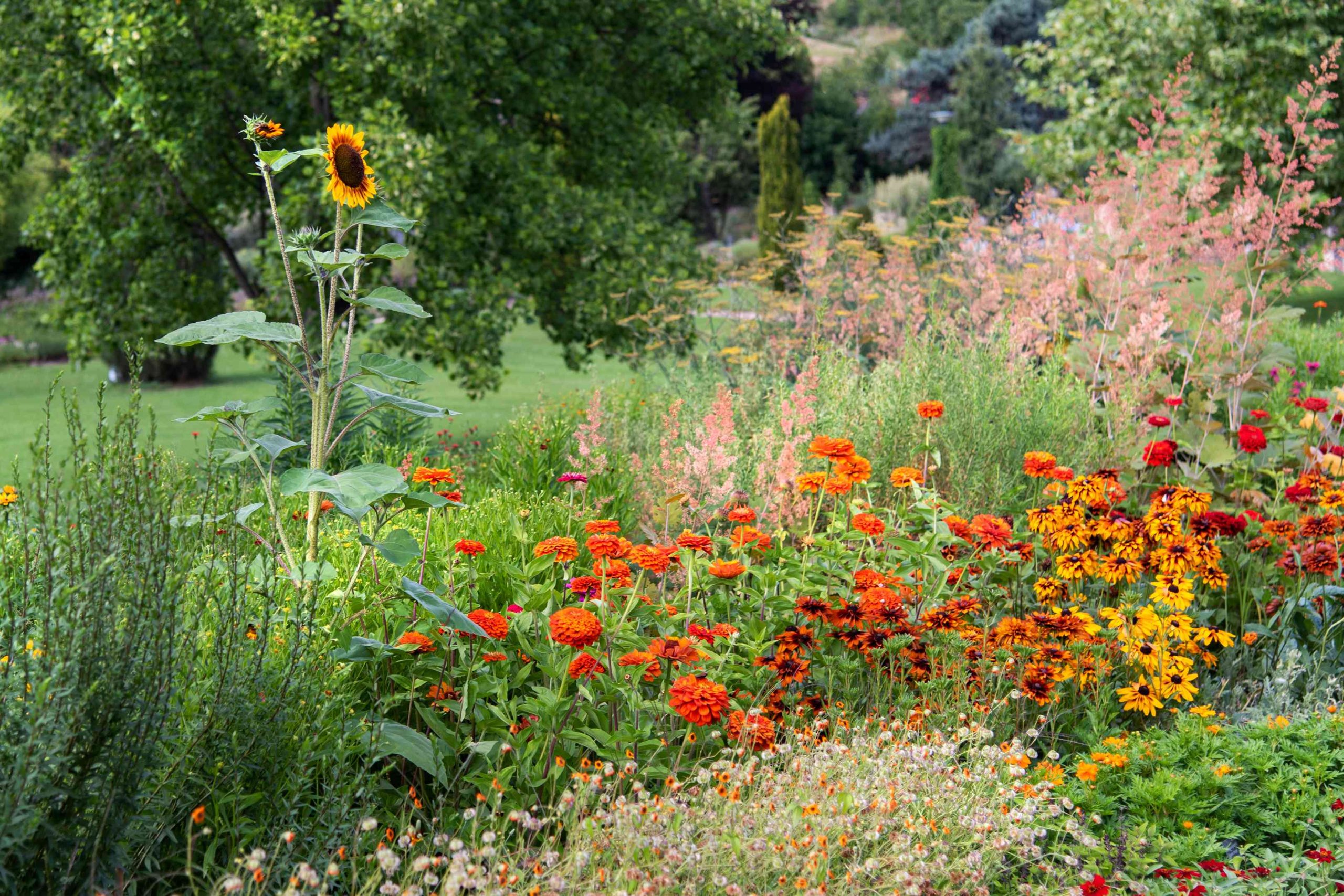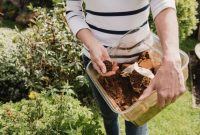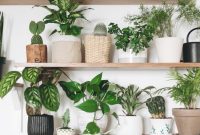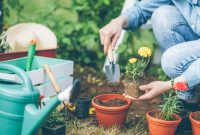The Beginning
Making a colorful garden outside is a fun project that will give you a lot of pleasure as you watch nature’s beauty grow in your backyard. The key is to choose plants carefully, plan ahead, and have a little green hand magic. Let’s learn more about gardening and how to choose plants that will make your outdoor space a haven of color, scent, and living things that are doing well.
What Makes a Garden Lively?
A lively yard has a mix of colors, textures, and smells that work well together and wake you up. Each plant in this area works well with the others to make a beautiful and interesting outdoor spot. To get brightness, you need to carefully think about many things, from the types of plants you use to the conditions of the land.
Why choosing the right plants is important
How to Figure Out Your Climate Zone
It is very important to choose plants that will do well in your temperature zone. Different plants do better in different conditions. Picking plants that are native to your zone will help them grow with little work on your part.
Putting Plants in the Right Soil
Different types of soil have different needs for plants. If you know what kind of dirt you have—sandy, loamy, or clayey—you can choose plants that will do well in your yard.
Taking Sunlight and Shade into Account
Different plants need different amounts of sunlight. When planning your yard, make sure you take the sun and shade patterns into account. Put plants that like the sun where they will do best and plants that like the shade where they will do best.
Taking Maintenance Work Into Account
Think about how much time and work you can put into gardening. If you don’t have much time, choose plants that don’t need much care. This way, your garden will stay healthy without becoming too much work.
How to Pick the Right Plants
Flowers that do well in the outdoors
It is very important to choose bright, hardy flowers. Some flowers that look great outside are roses, marigolds, and zinnias. They add pops of color.
Grasses and groundcovers for decoration
Add groundcovers and decorative plants for color and variety. These easy-to-take-care-of plants make a thick, carpet-like look.
Trees and bushes that bear fruit
For both looks and usefulness, think about trees and bushes that bear fruit. Berry bushes bring in animals and fruit trees make the yard look better.
Low-Care Annuals and Shrubs
Choose plants that come back every year and don’t need to be replanted all the time. You can choose from hostas, daylilies, and rosemary.
Color coordination to make things look good
Plants will look better if their colors go together. Putting flowers together by color makes a beautiful scene that flows together.
Advice on Where to Put Plants
Setting up focal points
Place focus point plants in a way that draws attention to them. These could be big flowers, one-of-a-kind art, or interesting details that give the garden personality.
Making Use of Vertical Spaces
To make the most of your room, grow plants high. Plants that grow up walls and fences save room and make things look classier.
Planting companions to get along
Planting plants next to each other can help them get along. Some plants are better when grown together. For example, tomatoes and basil together make the food taste better and keep pests away.
Techniques for Preparing the Soil
Checking and fixing the soil
Do tests on the dirt to find out what it is made of. If the earth needs it, add organic matter or nutrients to make it the best place for plants to grow.
Using mulch to keep water in the soil
Mulching helps keep soil wet, keeps weeds down, and keeps the soil’s temperature stable. To keep your garden growing well, add a layer of vegetable mulch.
Composting to Make Soil Rich in Nutrients
Composting food scraps and yard waste will make soil that is full of nutrients. Making compost at home improves the dirt and gives plants the nutrients they need to grow.
Tips for Watering
Effective Watering Plan
Set a regular watering routine to make sure plants get enough water without getting too much. For strong, healthy growth, consistency is key.
Systems for Drip Irrigation
For efficient and focused watering, you might want to put drip irrigation systems. This keeps water from going to waste and makes sure every plant gets the water it needs.
Getting water from rain for sustainability
Use the power of nature by collecting water from rain. Rain barrels are a safe way to get water, which is good for the environment.
Ways to Get Rid of Pests
Natural Pest Control and Predators
Use natural ways to get rid of pests, like putting plants that keep pests away or bringing ladybugs and birds that eat pests.
Using companion planting to keep pests away
Plant pest-resistant types next to plants that are more likely to get pests to make a natural shield. This means that chemicals aren’t needed as much.
Checking often and getting involved early
Check your yard often for signs of pests. Infestations don’t spread when you stop them early, like by cutting off leaves that are damaged or using organic chemicals.
Care Tips for Different Seasons
Getting ready for spring
Clean up your yard, prune, and fertilize it to get it ready for spring. This makes it possible for a healthy growth season.
Upkeep in the summer
During the summer, make sure to water properly and keep an eye out for bugs. Remove the old leaves and deadhead flowers to keep them growing.
Cleaning up in the fall
As fall comes, clean up your garden by getting rid of any dead plants, adding mulch, and planting flowers that bloom in the fall for a longer show.
Safety for the winter
During the winter, plants that are easily damaged need to be protected by covering them and keeping the soil warm. This will protect your plant from the cold and help it grow back strong in the spring.
How to Choose the Right Plants for a Bright Outdoor Garden
Making sure color all year
Keeping up with a garden all year is necessary. Pick plants that bloom at different times so that your garden is always bright, from spring to fall. For winter interest, think about planting evergreens that look nice even when it’s cold outside.
Getting Used to the Different Seasons
This is very important as the seasons change. Be ready to change the way your yard is laid out and the plants you choose as the seasons change. Let your garden change with the seasons as you follow the ups and downs of nature.
Questions People Ask Often
Which plants should you start with?
Succulents, marigolds, and pansies are hardy plants that don’t need much care for beginners. It’s fun to grow with these plants because they’re easy to care for.
How do I get pollinators to come to my garden?
Plant flowers that are high in nectar, like lavender, coneflowers, and bee balm, to get insects like bees and butterflies. Having a yard with lots of different plants and colors will automatically attract bees.
How often should I water my plants?
How often you should water varies on things like the weather and the type of dirt you have. To encourage deep root growth, try for deep watering that doesn’t happen very often. Change based on what the plant needs.
Why do some garden pests bother me?
Use natural repellents, bring in helpful insects, and keep your garden clean to get rid of common pests. The best way to get rid of pests is to check on them often and act quickly.
Can I grow herbs with flowers?
Yes, herbs like rosemary, mint, and basil can grow with flowers. This not only makes your garden smell nicer, but it also gives you fresh herbs that you can use in cooking.
What kinds of plants do well in shade?
Hostas, ferns, and impatiens are all plants that do well in shade. To make a rich, colorful garden in a shady spot, choose plants that do well in low light.
In conclusion
Making Your Garden Dream Come True
To sum up, making a beautiful outdoor garden is an art that requires knowledge, love, and a bit of nature. You can turn your outdoor space into a colorful oasis by carefully choosing plants, knowing what your yard needs, and enjoying the changing seasons. If you choose the right plants, the colors in your yard will look like a work of art.





